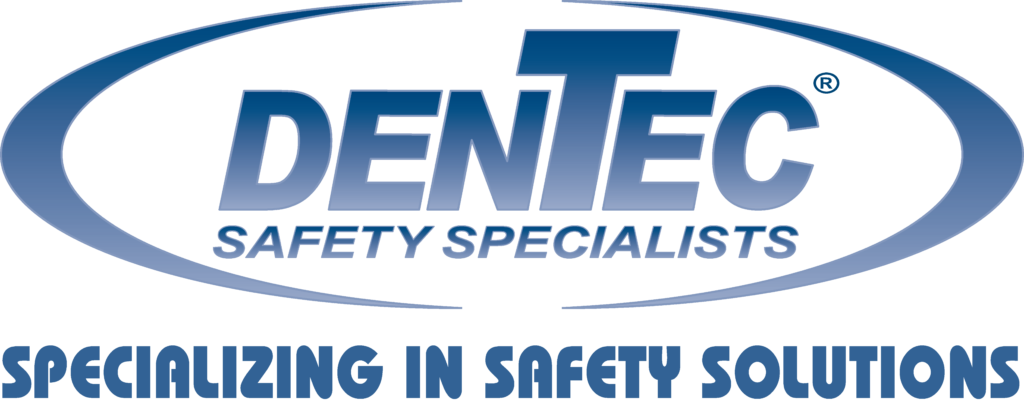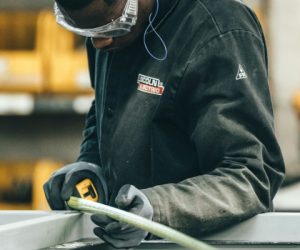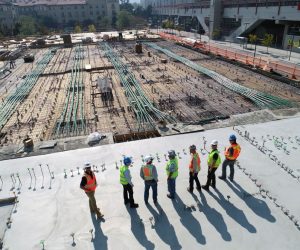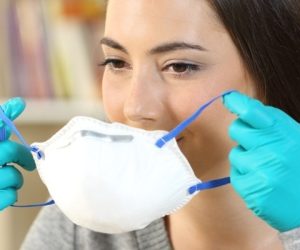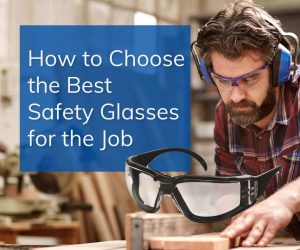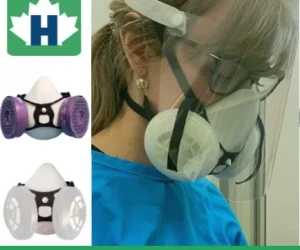Noise is one of the most common workplace hazards. Workers in many industries and occupations in Canada are exposed to noise levels that are so high that their hearing can be damaged.
Sometimes the noise may not even be considered to be noise — such as the very loud music to which entertainers and food and beverage servers are exposed in bars and nightclubs. If the sound is loud enough and workers are exposed to it for long enough, their hearing will be damaged.
According to NIOSH:
- 1 in 4 American workers will suffer hearing loss.
- A ratio that has left some 10 million noise-exposed workers in the U.S. hearing impaired.
Fortunately, work-related hearing loss is preventable. Employers in Canada are responsible for minimizing the noise hazard at their workplaces and must comply with provincial Occupational Health and Safety (OHS) legislation. This article describes what employers and workers can do to prevent work related noise induced hearing loss according to hearing protection legislation and the CSA guidelines.
Hazardous Noise

Hazardous noise is all around us at work, at play or just walking down the street. Hazardous noise begins at 85dBA (decibels) and exposure to continuous noise over 85dBA will damage your hearing over time. If protective measures are not taken, your hearing will debilitate to a point that you will not be able to communicate.
Important Facts
- Hearing damage is cumulative, overtime, & IRREVERSIBLE.
- Hearing protection must be worn without exception in a toxic noise environment.
- Through time, even short and seemingly harmless breaks in use during a workday can render currently available hearing protection products ineffective.
Effects of Exposure to Loud Noise
The most serious effect of exposure to loud noise is hearing loss. It is caused when small “hair” cells in the inner ear are damaged or destroyed. Hearing loss risk depends on the:
- Level (loudness or intensity) of the noise.
- Frequency (pitch) of the noise.
- Duration of exposure.
- Individual susceptibility (to a limited extent).
Noise Level (8 Hour Avg)
| 160 dBA | Ruptured Eardrum |
| 125 dBA | Pain/Discomfort |
| 90 dBA | Permanent hearing loss in approximately 25% of repeated exposed workers |
| 85 dBA | Permanent hearing loss in approximately 8% of repeated exposed workers |
| 75-84 dBA | Minor hearing loss may develop in people with sensitive hearing if repeatedly exposed |
Rule of Thumb
- When you feel the need to shout to be heard three feet away the noise levels are probably 85 dBA or more and hearing protectors are recommended.
The number of workers exposed to toxic noise in North America now tops 30 million, leaving NIHL (Noise-Induced Hearing Loss) as the leading occupational illness in North America. Work related injury due to hearing loss is costing companies hundreds of millions of dollars annually in compensation claims, increase in premiums and employee productivity.
In Canada, CSA has created a standard for hearing protection, Z94.2-14. This standard provides specific recommendations as to how to establish an effective hearing conservation program and a rating system on how to select the proper hearing protector for your application. In the CSA standard there are three classes of hearing protection, Class A, B and C. These classes rate the ability of the hearing protector to reduce the noise at the ear (measured in decibels (dB) across a range of frequencies.
This standard recognizes that not only must the hearing protector reduce the intensity of the noise, the decibels (dB), but must also reduce the hazardous noise by a specific amount across a specific range of frequencies that are common in the workplace.
CSA Hearing Protectors Class Designation Z94.2-9
| CSA CLASS | 125 | 250 | 500 | 1000 | 2000 | 3150 | 4000 | 6300 | 8000 |
| A | 10 | 18 | 26 | 31 | 33 | 31 | 33 | 33 | 33 |
| B | 5 | 12 | 16 | 21 | 3 | 23 | 21 | 23 | 23 |
| C | None | None | None | 11 | 13 | 13 | 11 | 13 | 13 |
L Designation – Hearing protectors that meet the requirements for either Class A or B and have a minimum of 20 dB attenuation at 125 Hz will be designated AL or BL, respectively.
- A hearing protect that meets:
- Class “A” – requirements offers the highest level of protection according to the standard.
- Class “B” – provides less and,
- Class “C” – provides even less.
However, it is important to understand that the lowest class of hearing protection might be the right product for your application.
Why the lowest class of hearing protection might be the right product to use for your application:
- Isolation – When you cannot hear the environment around you, a feeling of isolation may occur causing the individual to be less alert, less productive and more prone to workplace injury.
- Injury – Not being able to hear warning signals either from alarms or from co-workers can lead to injuries from their working environment.
- Equipment breaking – Not being able to hear machinery or equipment breaking, could lead to injury or lost production.
Hearing Conservation Program
To help protect your hearing, your employer should establish a hearing conservation program. The program should include these 5 key phases:
- Sound surveys
Sound surveys are used to identify work locations where hazardous noise levels exist. Employee exposures to noise are monitored periodically with a sound level meter or with a noise dosimeter. - Noise controls
When possible, noise may be reduced or eliminated by modifying existing machinery and placing noise limit specifications on new equipment. Also, you can do your share by maintaining your equipment regularly and using noise controls when installed. Report any noisy equipment as soon as possible to your supervisor. - Hearing evaluations
Hearing is measured with an audiometer that sends tones to each ear through Headphone. A baseline audiogram shows your initial hearing status, for comparison to future audiogram. Periodic audiograms provide an update to determine if your hearing conservation program is effective. - Hearing protection
Hearing protectors can be very effective but only if they fit properly and are worn correctly. Make sure to select hearing protectors that have been tested by an independent and accredited laboratory to ensure the product you have selected will provide the protection it claims to provide. The objective of a hearing protector is to reduce the hazardous noise at the ear to below the allowable limit set by the regulatory authorities or your company. A hearing protector should not completely shut off the sound around you. The proper hearing protector should reduce the hazardous noise at the ear but allow you to communicate in your environment. The most common level is 85 dBA for an 8-hour period. (TWA) and at this level hearing protection is required. Periodic audiograms provide an update to determine if your hearing conservation program is effective. - Ongoing education
The responsibility of every employer is to ensure that workers are well informed about all hazards in the work environment. The worker should be well aware of the sources of noise that may cause hearing loss, the long-term effects of those hazards and the protection that the employer is supplying to protect them. The employer should discuss these issues with workers continuously so that they are sure the worker is informed.
Now it takes your participation to succeed.
The 3 Classifications of Hearing Protectors:
Hearing protectors may feel uncomfortable at first, but over a short period of time, you will become more use to wearing them as you would a new pair of shoes or glasses. However, if the hearing protector continues to be uncomfortable you may need to select another type of product. This is not uncommon and the reason why your hearing conservation program should allow you a choice of hearing protection devices.
Disposable Ear Plugs
- Foam earplugs are compressed or shaped prior to insertion made of an expandable, slow-recovery foam or polyurethane.
- One size fits most. Once in the ear, foam plugs gently expand to provide a snug and secure custom fit.
- They are available with and without a cord.
Pre-Molded Earplugs
- Pre-molded plugs are made from flexible materials that are preformed to fit the ear.
- They are generally available with a cord to prevent loss. They are available in universal sizing or multiple sizing that must be individually sized for each ear.
- If after a week or so you’ve been unable to get used to your earplugs, check with the fitter to try another size, type, or brand of hearing protector.
Semi Aura Earbands
- Also referred to as canal caps or ear-bands, consist of pods or flexible tips attached to a lightweight headband.
- Because they are quick to put on and take off and are easy to store around the neck, they are ideal for intermittent use.
Earmuffs
- Earmuffs have rigid cups with soft synthetic cushions that seal around the ears to block out noise.
- Foam-filled cushions are usually preferred over liquid filled versions because they are lighter, more durable, equally protective and will not leak.
- Most recent school of thought is that dual protection, muffs & plugs, will increase protection level 3-5 dB.
To learn more about how to protect against Hazardous Noise and Hearing Damage check out our wide range of Hearing Protector Products and Solutions here.
Dentec Safety is a leading manufacturer and distributor of safety products in the North America since 2004. Dentec Safety is dedicated to providing the highest quality safety products and solutions delivering enhanced value and comfort. Our expertise from decades of experience in Industrial Safety and our innovative design technologies have solidified us as thought leaders in the field. Protection and comfort are at the core of everything we do at Dentec. As a leading manufacturer of Safety Solutions, it is our mission to help organizations do the right thing, keep their employees safe and exceed Industry Health & Safety Standard.
